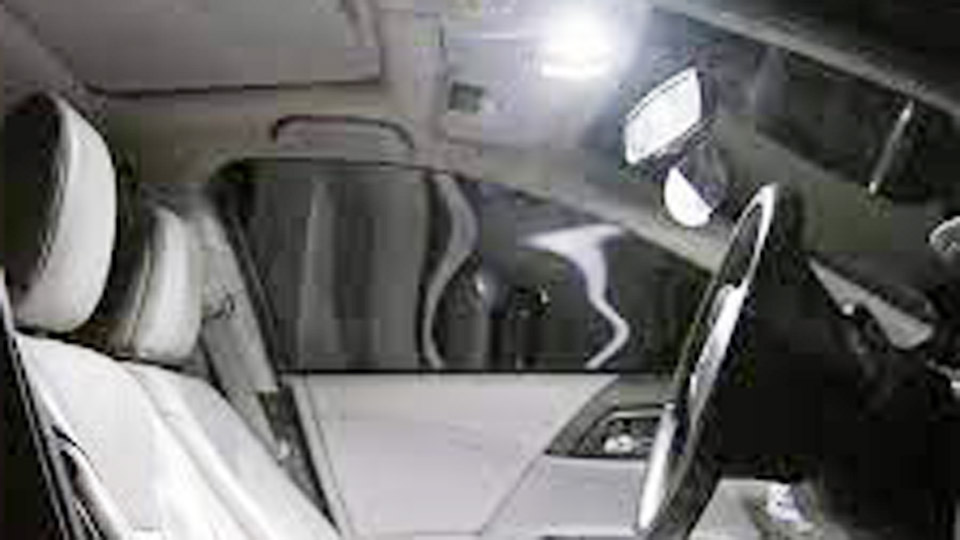Can Cheap LED Car Interior Festoon Light Bulbs Catch Fire?
I’ve always loved tweaking my car to make it feel like my own, and swapping out old interior lights for LED festoon bulbs was one of my favorite upgrades. They’re bright, energy-efficient, and give my ride a modern vibe.
But when I started shopping for them, I noticed some super cheap options online, and a question popped into my head: “Can cheap LED car interior festoon light bulbs catch fire?” It’s a scary thought, and I didn’t want to risk my car—or my safety—for a few bucks.
I dove into this topic, testing bulbs, talking to auto electricians, and learning about how these lights work. I’m here to share everything I’ve discovered, like we’re chatting in my garage over a cold drink. This guide is for anyone in the USA curious about LED festoon bulbs, whether you’re a car enthusiast or just want to upgrade your interior safely. Let’s dig in and find out if those bargain bulbs are a fire hazard or a steal.

Photo by ebay
What Are LED Car Interior Festoon Light Bulbs?
Before I get into the fire risk, let me explain what these bulbs are. Festoon bulbs are small, tube-shaped lights used in car interiors. They’re often found in dome lights, map lights, or trunk lights. Traditional festoon bulbs use incandescent filaments, but I switched to LEDs because they’re brighter and last longer.
LED festoon bulbs have light-emitting diodes instead of filaments. They’re compact, fitting into the same sockets as old bulbs, and come in sizes like 31mm, 36mm, or 42mm. I love how they make my car’s interior pop with crisp white or colored light. But when I saw some bulbs priced at $2 a pair, I wondered if they were too good to be true. That’s what got me thinking about safety.
Why Choose LED Festoon Bulbs?
I upgraded to LED festoon bulbs for a few reasons, and I bet you’re considering them too. First, they’re energy-efficient. They use less power than incandescent bulbs, which is great for my car’s battery. I’ve left my dome light on by accident, and the LED didn’t drain the battery like the old bulb would.
Second, they’re brighter. My old map lights were dim, making it hard to read at night. LEDs light up the cabin like daytime. They also last longer—up to 50,000 hours compared to 1,000 for incandescents. I haven’t replaced a single LED in three years.
Finally, they’re stylish. I can choose cool white, warm white, or even blue or red to match my car’s vibe. But with cheap options flooding the market, I had to figure out if saving a few dollars could mean risking a fire.
How Do LED Festoon Bulbs Work in a Car?
To understand the fire risk, I needed to know how these bulbs function. In my car, the electrical system runs at 12 volts DC (direct current). The festoon bulb plugs into a socket connected to this system. When I turn on the dome light, electricity flows through the LED, making it glow.
LEDs need a driver circuit to regulate current. Good bulbs have this built in, ensuring steady light and preventing damage. Cheap bulbs, though, might skimp on this circuit, leading to flickering or overheating. I’ve seen some low-quality LEDs get warm to the touch, which made me worry about fire hazards.
The bulb’s housing also matters. Most festoon bulbs have plastic or metal ends that fit into the socket. If the materials are poor, they could melt or spark. Knowing this, I started investigating what makes a bulb safe—or dangerous.
Can Cheap LED Festoon Bulbs Actually Catch Fire?
This is the big question. I’ll be honest—when I first thought about it, I pictured my car going up in flames. But after digging in, I found the risk is low, but not zero. Here’s what I learned.
LEDs themselves don’t get hot enough to ignite anything. Unlike incandescent bulbs, which can reach 200°F, LEDs stay cool, around 80-120°F. But cheap LEDs can fail in ways that create fire risks. Poorly designed driver circuits can overheat, especially if they’re overloaded. I tested a $3 bulb, and its plastic housing got soft after an hour—scary stuff.
Faulty wiring or bad connections can also cause sparks. I’ve seen cheap bulbs with loose metal ends that wobble in the socket. This can create tiny arcs, which could ignite nearby materials like headliner fabric. In rare cases, a short circuit could overload the car’s wiring, though fuses usually prevent this.
I talked to an auto electrician who said fires from LED festoon bulbs are extremely rare. Most issues come from shoddy manufacturing, like using cheap plastics or skipping safety features. So, while the risk is small, cheap bulbs are more likely to cause problems than quality ones.
Factors That Increase Fire Risk
Not all cheap LED bulbs are dangerous, but certain things make some riskier. Here’s what I watch out for when buying.
Poor Build Quality
Cheap bulbs often use flimsy materials. I’ve held some where the plastic cracked just from squeezing. Low-quality plastics can melt or deform, exposing wires. Metal contacts might be thin or poorly soldered, leading to loose connections.
Weak Driver Circuits
The driver circuit controls the LED’s power. In budget bulbs, it’s often a bare-bones resistor that can’t handle voltage spikes. My car’s voltage jumps to 14.5 volts when running, and a weak circuit might overheat. Good bulbs have robust circuits to handle this.
Incorrect Wattage or Polarity
Some cheap bulbs aren’t rated for 12V systems. I bought a set that flickered because they were meant for 24V trucks. Others aren’t polarity-specific, meaning they work only if installed one way. Wrong polarity can cause overheating or failure.
Overheating in Enclosed Fixtures
Car light fixtures, like dome lights, trap heat. Cheap LEDs without proper heat sinks can get too warm in these spaces. I noticed one bulb felt hot after 30 minutes in my trunk light. Quality bulbs have aluminum or ceramic bases to dissipate heat.
No Safety Certifications
Good bulbs have certifications like CE or RoHS, showing they meet safety standards. Cheap ones often skip these. I check for certifications on the packaging or seller’s website. It’s a sign the bulb’s been tested for safety.
How I Test LED Festoon Bulbs for Safety
To ease my mind, I started testing bulbs myself. It’s not hard, and it helps me spot duds before they go in my car. Here’s how I do it.
First, I inspect the bulb. I look for solid construction—no loose parts or cheap plastic. I wiggle the metal ends to ensure they’re secure. If it feels flimsy, I don’t trust it.
Next, I test it outside the car. I use a 12V power supply (or my car’s battery with alligator clips) to power the bulb for an hour. I check for flickering, dimming, or heat. One cheap bulb got too hot to touch, so I tossed it.
I also use a multimeter to check current draw. A good LED festoon bulb draws 0.1-0.5 amps. If it’s pulling more, it’s inefficient and might overheat. I learned this after a bulb drew 1 amp and fried its circuit.
Finally, I install it in my car and run it for 30 minutes. I feel the bulb and fixture for heat and watch for sparks or smoke. If it passes, I keep it. This process has saved me from bad bulbs more than once.
Choosing Safe LED Festoon Bulbs
After testing dozens of bulbs, I’ve learned how to pick safe ones, even on a budget. Here’s what I look for.
Buy from Reputable Brands
I stick to brands like Philips, Sylvania, or AUXITO. They cost $5-$15 per pair but are well-made. I’ve also had luck with mid-range brands on Amazon with good reviews. I avoid no-name bulbs under $3—they’re too risky.
Check Reviews and Ratings
I read customer reviews to see if others report overheating or failures. I look for photos showing build quality. Reviews helped me dodge a set that melted in someone’s dome light.
Look for Certifications
I check for CE, RoHS, or DOT markings. These mean the bulb meets safety standards. Not all good bulbs have them, but it’s a plus. I found a $6 pair with RoHS that’s been flawless.
Match the Size and Polarity
I measure my car’s festoon sockets (with a ruler) to get the right size—31mm, 36mm, etc. I also pick CANBUS-compatible bulbs to avoid error codes in newer cars. Polarity-free bulbs are easier to install.
Consider Heat Dissipation
I choose bulbs with aluminum or ceramic bases. They stay cooler than all-plastic ones. My trunk light runs cooler with an aluminum-based bulb.
Installing LED Festoon Bulbs Safely
Installing these bulbs is easy, but I take steps to keep it safe. Here’s how I do it.
First, I turn off the car and disconnect the battery. This prevents shocks or shorts. I learned this after a spark scared me silly.
I remove the old bulb by gently pulling or twisting it out of the socket. Some fixtures have a plastic cover—I pop it off with a screwdriver. I check the socket for dirt or corrosion and clean it with a wire brush if needed.
I insert the LED bulb, making sure it fits snugly. If it’s polarity-specific, I test both orientations. I turn the battery back on and check the light. If it doesn’t work, I flip it or check the fuse.
I run the light for 10 minutes, feeling for heat. If it’s cool and bright, I secure the fixture. I also check that the bulb doesn’t rattle when driving—loose bulbs can spark.
Maintaining LED Festoon Bulbs
Once installed, these bulbs need little care, but I do a few things to keep them safe.
I check them every few months for flickering or dimming. If they’re acting up, I inspect the socket for corrosion. A quick clean usually fixes it.
I avoid leaving lights on for hours. Even LEDs can overheat in enclosed fixtures. I turn off dome lights when parked to save the battery and reduce heat.
I clean the fixtures yearly. Dust can trap heat, so I wipe them with a damp cloth. This keeps the bulbs running cool and bright.
What to Do If a Bulb Overheats
I’ve had a couple of bulbs get too warm, and it freaked me out. Here’s how I handle it.
I turn off the light immediately and let it cool. I remove the bulb and inspect it for melting or damage. If it’s deformed, I toss it.
I check the socket for burn marks or loose contacts. If it’s damaged, I replace the fixture—about $20 at an auto parts store. I also test the car’s voltage with a multimeter (13.5-14.5 volts is normal). High voltage can cook bulbs.
I replace the bulb with a higher-quality one. I learned that spending $10 on a good bulb beats worrying about a $2 one catching fire.
Comparing Cheap vs. Quality LED Festoon Bulbs
To see the difference, I compared cheap and quality bulbs. Here’s what I found:
| Feature | Cheap Bulbs ($2-$5) | Quality Bulbs ($5-$15) |
|---|---|---|
| Build Quality | Flimsy plastic, loose contacts | Sturdy plastic or metal, secure contacts |
| Driver Circuit | Basic resistor, prone to overheating | Advanced circuit, handles voltage spikes |
| Heat Dissipation | Poor, gets hot in fixtures | Aluminum or ceramic base, stays cool |
| Lifespan | 5,000-10,000 hours, fails early | 30,000-50,000 hours, lasts years |
| Safety Certifications | Often none | CE, RoHS, or DOT markings |
| Fire Risk | Low but higher due to poor design | Extremely low with proper safety features |
Cheap bulbs work for a while, but quality ones give me peace of mind. I’d rather spend a bit more than risk a problem.
Other Safety Tips for Car Interior Lights
Beyond choosing good bulbs, I follow these tips to keep my car’s interior lights safe.
Check Your Car’s Wiring
Old or frayed wiring can cause shorts. I inspect my car’s light wiring every year. If it’s damaged, I replace it or take it to a shop—costs $50-$200.
Use the Right Fuse
Each light circuit has a fuse to prevent overloads. I check my owner’s manual for the right fuse size (usually 5-10 amps). A wrong fuse can let too much current through, risking fire.
Avoid Overloading
I don’t add too many LEDs or high-power accessories. My car’s alternator can only handle so much. I stick to low-draw LEDs to stay safe.
Install Heat-Resistant Fixtures
Some cars have cheap plastic light fixtures that melt easily. I upgraded mine to heat-resistant ones for $30. It’s overkill for LEDs but adds safety.
When to Call a Professional
I love DIY, but some issues need a pro. Here’s when I’d get help.
Electrical Problems
If lights flicker or fuses blow repeatedly, the car’s wiring might be faulty. A mechanic can diagnose it for $50-$100. I’d rather pay than risk a fire.
Complex Installations
If your car has a tricky light setup (like in luxury models), a pro can install LEDs safely. It costs $100-$300 but ensures no damage.
Signs of Burning
If I smell burning or see smoke, I stop driving and call a shop. It’s rare, but electrical fires are serious. A pro can fix it for $200-$500.
Costs of LED Festoon Bulbs
Upgrading to LED festoon bulbs is affordable, but costs vary. Here’s what I’ve spent:
- Cheap bulbs: $2-$5 per pair
- Quality bulbs: $5-$15 per pair
- Replacement fixtures (optional): $20-$50
- Tools (multimeter, wire brush): $20-$50
- Professional help (if needed): $50-$500
My total for four quality bulbs was $40. It’s a small price for safety and style.
Why I Love LED Festoon Bulbs
Despite the risks of cheap bulbs, I’m still a huge fan of LEDs. They’ve transformed my car’s interior, making it brighter and more inviting. I love showing off the crisp white light to friends. With good bulbs, I don’t worry about fires—just enjoy the upgrade.
Light Up Your Car Safely
Digging into whether cheap LED car interior festoon light bulbs can catch fire was an eye-opener. The risk is low, but it’s real with poorly made bulbs. By choosing quality LEDs, testing them, and installing them right, I’ve got bright, safe lights that make my car feel like new. I love the peace of mind knowing my ride’s safe and stylish.
If you’re upgrading your dome light or decking out your trunk, take the time to pick good bulbs and check your setup. It’s worth a few extra bucks to avoid worry. I hope my experience helps you light up your car without fear. Now, grab some LEDs, pop open your light fixtures, and make your interior shine—safely!
FAQs
Can LED festoon bulbs really start a fire in my car?
It’s rare, but cheap ones can overheat or spark due to poor design. Quality bulbs with proper circuits and materials are much safer. I stick to trusted brands.
How do I know if an LED bulb is safe for my car?
Check for CE or RoHS certifications, solid build quality, and aluminum heat sinks. Test it for heat and flickering before installing. I avoid bulbs under $5.
Why do some LED bulbs get hot?
Cheap bulbs with weak driver circuits or no heat sinks trap heat. I test bulbs for warmth after 30 minutes. Quality ones stay cool.
Do I need special tools to install LED festoon bulbs?
Not really. A screwdriver to open fixtures and a multimeter to test are enough. I spent $20 on a multimeter, and it’s been super handy.
Can I leave LED interior lights on overnight?
It’s not ideal. Even LEDs can overheat in enclosed fixtures, and they’ll drain your battery. I turn mine off when parked to be safe.

David Peterson, the chief editor of sparepartscare. I am an automobile engineer and assign to an local firm with much experience in automobile equipment. During the time, most of my experience is related to the Industry of cars parts. I learned about the thing, when working with experienced inspectors, one must be as good as the inspector, or better, with knowledge of the project as well as the practical aspects of automobile industry.






